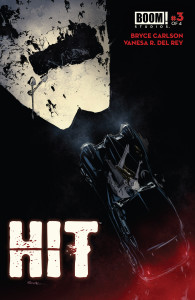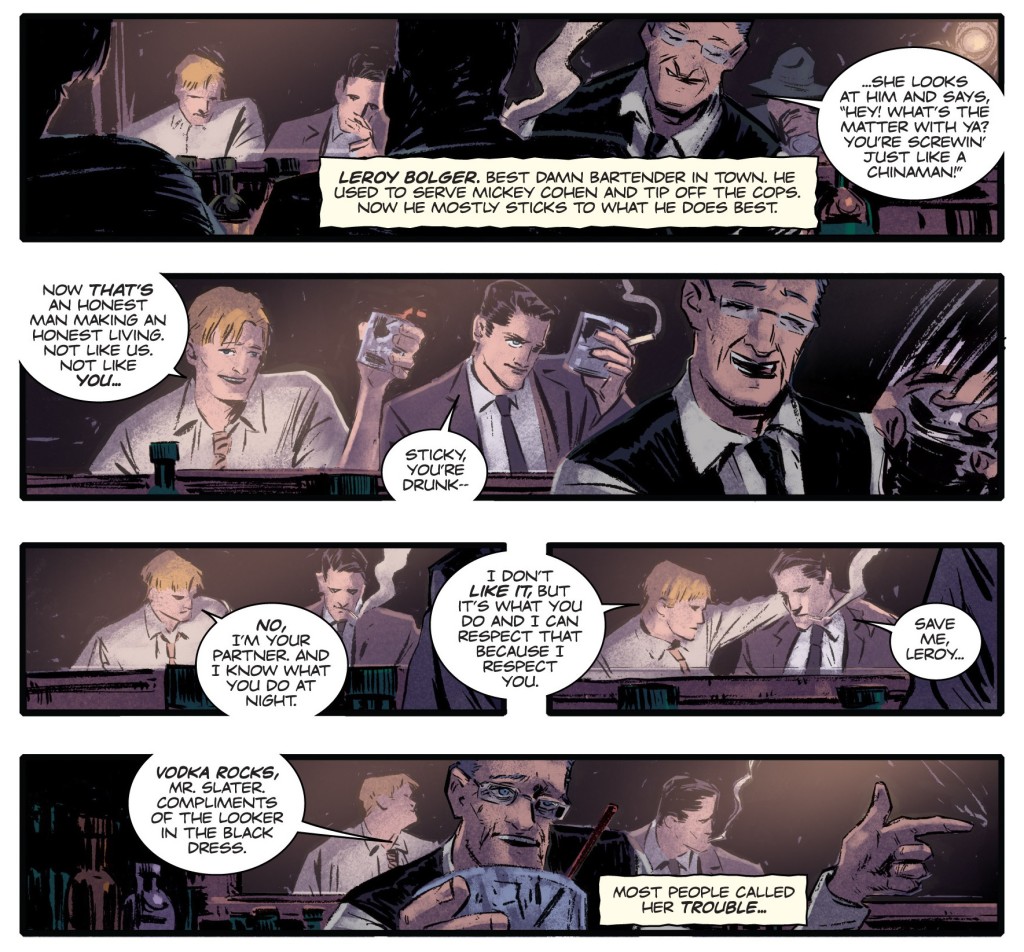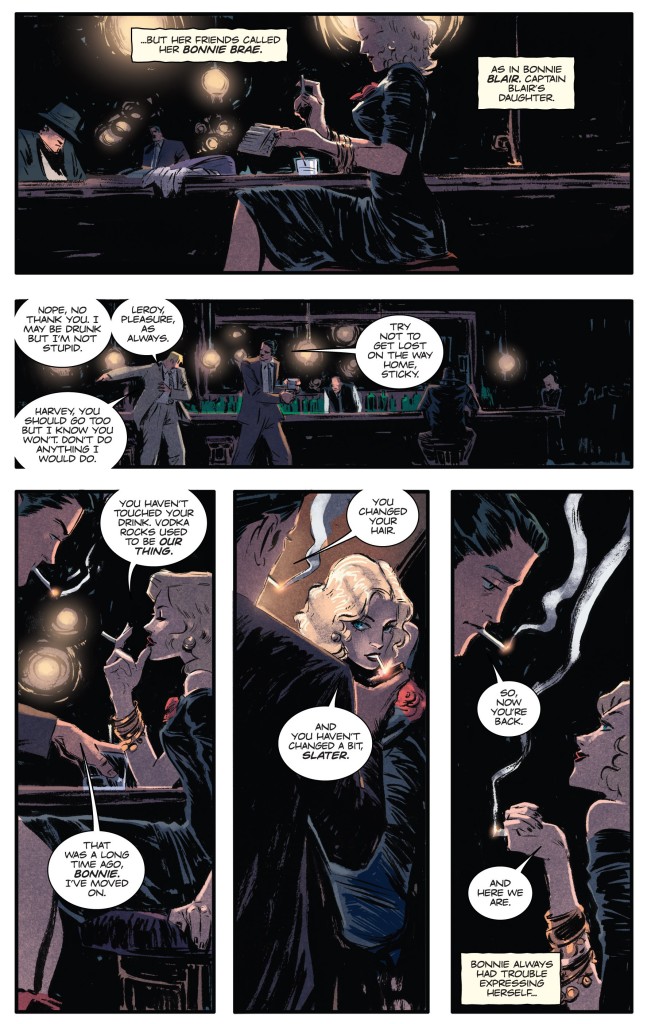As much as I love the outlandish side of Batman comics, with characters like Pee-Wee, the Talking Penguin, I’m actually a huge fan of Dark Knight stories that deploy tropes such as hardboiled dialogue, elaborate capers, twist-filled mysteries, and single-minded vigilantes moving through a seedy underworld…

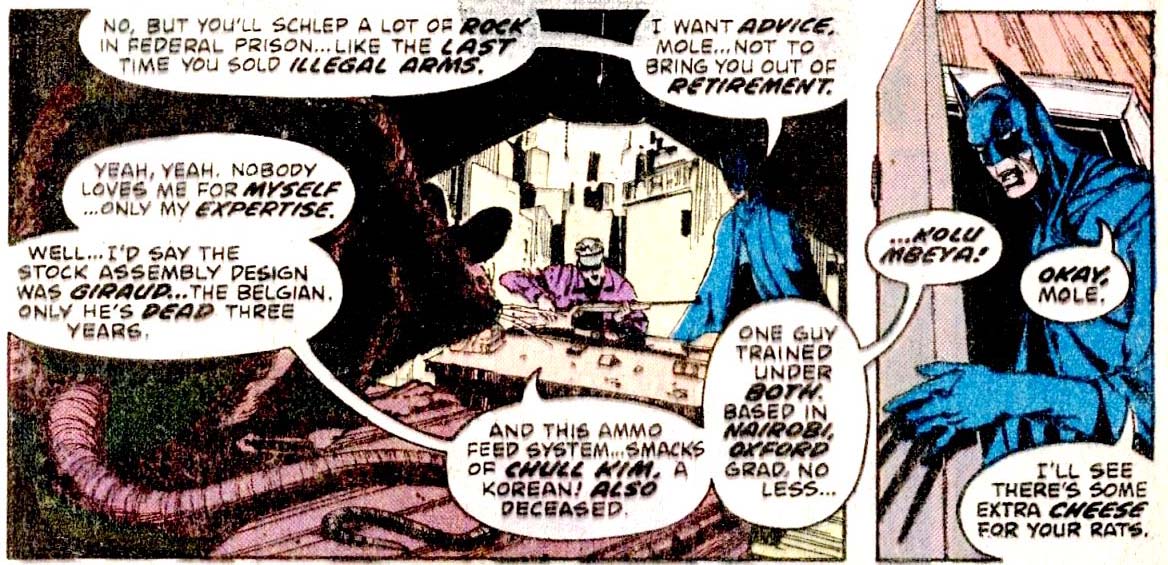 Detective Comics #443
Detective Comics #443
If you happen to be like me, you may also enjoy crime comics that feature less ridiculously clad protagonists. In that case, make sure you check out these suckers:
100 Bullets
 Imagine that a well-dressed old man with piercing eyes walks up to you one day and hands you an attaché case with irrefutable evidence of who’s to blame for the worst thing that ever happened to you. He also hands you a gun and one hundred rounds of untraceable ammunition – all with the assurance that even if you choose to use terminal force to exact your revenge no law enforcement agency can touch you. This is the initial premise of 100 Bullets, as that same offer is made to various down-on-their-luck characters, although the overarching plot soon shifts to a byzantine conspiracy involving the people behind the attaché and most of the intended victims. Along its 100 issues (and a recent 8 issue sequel), the series tells violent stories in all sorts of subgenres of crime fiction, featuring ghetto gangbangers and high class mobsters, amnesiac detectives and rough prison inmates, desperate losers and alpha male psychopaths… It also paints a multifaceted portrait of crime in 21st century America.
Imagine that a well-dressed old man with piercing eyes walks up to you one day and hands you an attaché case with irrefutable evidence of who’s to blame for the worst thing that ever happened to you. He also hands you a gun and one hundred rounds of untraceable ammunition – all with the assurance that even if you choose to use terminal force to exact your revenge no law enforcement agency can touch you. This is the initial premise of 100 Bullets, as that same offer is made to various down-on-their-luck characters, although the overarching plot soon shifts to a byzantine conspiracy involving the people behind the attaché and most of the intended victims. Along its 100 issues (and a recent 8 issue sequel), the series tells violent stories in all sorts of subgenres of crime fiction, featuring ghetto gangbangers and high class mobsters, amnesiac detectives and rough prison inmates, desperate losers and alpha male psychopaths… It also paints a multifaceted portrait of crime in 21st century America.

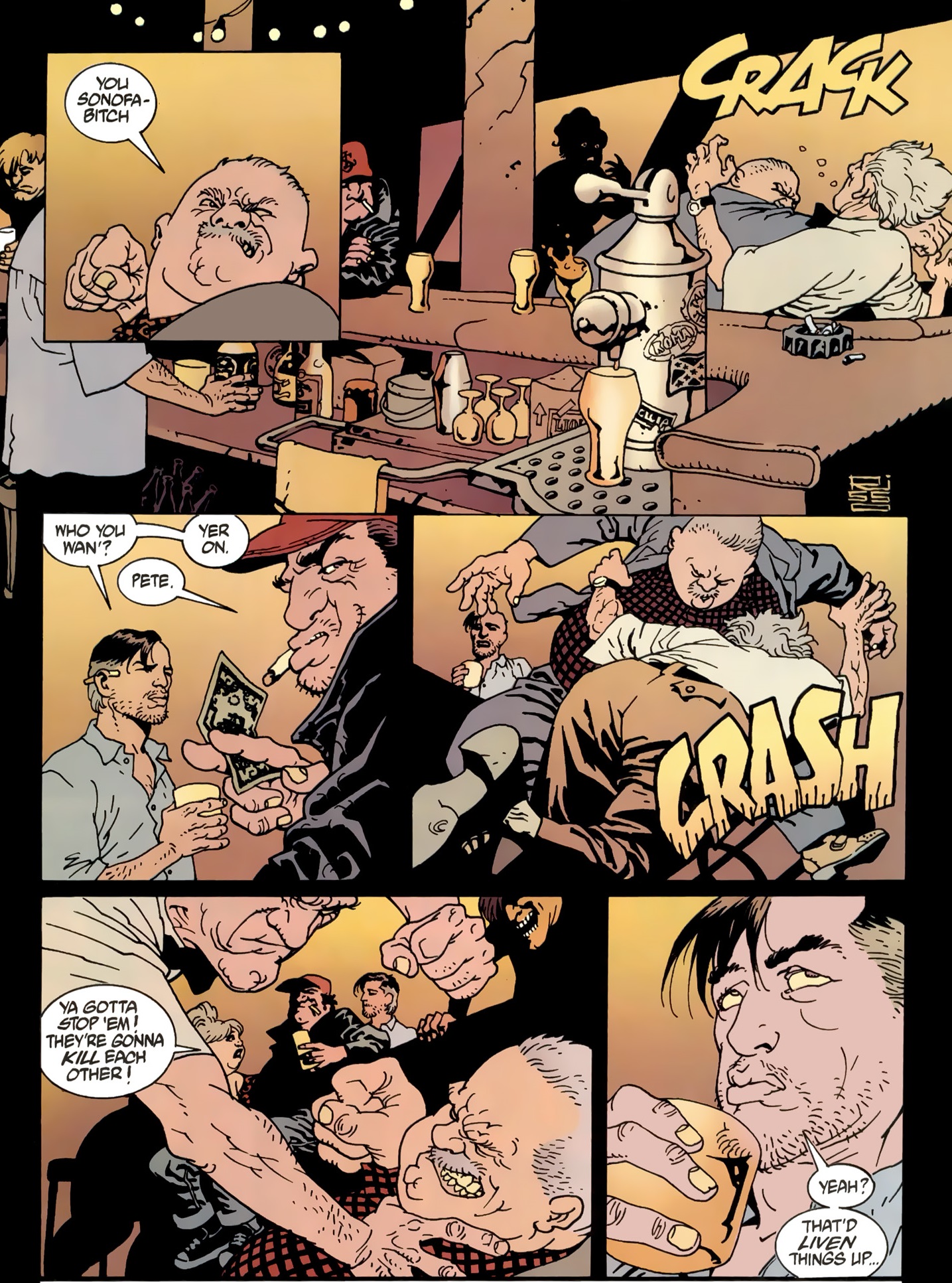 100 Bullets #4
100 Bullets #4
Behind the comic are three idiosyncratic creators. Brian Azzarello’s trademark as a writer is the fact that in his stories no one will ever say or do anything in a straightforward manner if there is a more roundabout way to go about it. While his labyrinthic approach to dialogue and plotting can get tiresome, at its best it deepens the narrative with multiple layers of meaning while celebrating the richness of American slang. Eduardo Risso’s art style is also an acquired taste, but there is no denying that he has one of the most original ‘cameras’ in comics, framing the action through inventive angles (including, well into the series, a POV shot from inside a mouth about to bite a hotdog). Similarly, Patricia Mulvihill’s coloring choices are not always obvious, but somehow they tend to work. 100 Bullets is especially recommended for fans of this trio’s Batman-related comics: Broken City and the tale that ran in Wednesday Comics.
Brian Michael Bendis’ black & white crime comics
 As difficult as it may be to believe it now, before becoming the most omnipresent writer at Marvel, Brian Michael Bendis wrote and drew some seriously cool indie crime comics in the 1990s. Goldfish is a neo-noir tale about a con man going up against a gangster called Lauren Bacall (way to wear your influences on your sleeve, Brian). It’s full of atmosphere and bravado, not to mention a great anti-climax (one of Bendis’ specialties). Jinx features the same con man when he was younger and focuses on his relationship with a female bounty hunter called Jinx in a plot that riffs on The Good, the Bad and the Ugly, of all things. Less retro, with a more Generation X urban vibe, it’s a slow-burn comic, not afraid to take long narrative detours and to flesh out its characters by giving them plenty of room to chat. Torso, co-written with Marc Andreyko, is set in 1930s Cleveland and based on the true story of how Eliot Ness investigated a serial killer who left only the torsos of his victims behind. It is suitably stylish and interesting.
As difficult as it may be to believe it now, before becoming the most omnipresent writer at Marvel, Brian Michael Bendis wrote and drew some seriously cool indie crime comics in the 1990s. Goldfish is a neo-noir tale about a con man going up against a gangster called Lauren Bacall (way to wear your influences on your sleeve, Brian). It’s full of atmosphere and bravado, not to mention a great anti-climax (one of Bendis’ specialties). Jinx features the same con man when he was younger and focuses on his relationship with a female bounty hunter called Jinx in a plot that riffs on The Good, the Bad and the Ugly, of all things. Less retro, with a more Generation X urban vibe, it’s a slow-burn comic, not afraid to take long narrative detours and to flesh out its characters by giving them plenty of room to chat. Torso, co-written with Marc Andreyko, is set in 1930s Cleveland and based on the true story of how Eliot Ness investigated a serial killer who left only the torsos of his victims behind. It is suitably stylish and interesting.
 Torso
Torso
Bendis’ dialogue reads like the bastard child of David Mamet and Quentin Tarantino, with just as much swearing and pop culture references. His artwork has a DIY feel, mixing drawings and scanned photos, but it more than makes up for any shortcomings through experimental layouts. The bounty hunter Jinx shows up again in Sam & Twitch, a Spawn-spinoff Bendis wrote (but did not draw) in the early 2000s. Sam & Twitch actually started off as an uninspired horror comic (including a storyline that is beat for beat the same as the opening arc of Bendis’ long running superhero police procedural Powers, only with witches), but it grew into a strong crime series.
In this case, there’s not much of a chance to test the field through Batman comics, as Brian Michael Bendis practically hasn’t done any. His only related work is the short story ‘Citizen Wayne’ in Batman Chronicles #21, in which he reimagined the Dark Knight mythos through the lens of the classic film Citizen Kane (it’s neat, but not as much as Mark Waid’s and Brian Augustyn’s exploration of the same idea in Legends of the Dark Knight Annual #4).
Button Man
 What if the rich could get the poor to kill each other for sport and bet on the result? Or rather, what if The Hunger Games had been written in the 1990s, set in contemporary reality, featured grown men, and overflowed with British nastiness (a la Get Carter)? Well, that’s Button Man. The original story, ‘The Killing Game,’ really packs a punch. The first sequels, ‘The Confession of Harry Exton’ and ‘Killer Killer,’ although unnecessary and lacking the freshness of that initial outing, are nevertheless gripping reads. As for the fourth entry in the series, ‘The Hitman’s Daughter,’ that one may as well be ignored forever.
What if the rich could get the poor to kill each other for sport and bet on the result? Or rather, what if The Hunger Games had been written in the 1990s, set in contemporary reality, featured grown men, and overflowed with British nastiness (a la Get Carter)? Well, that’s Button Man. The original story, ‘The Killing Game,’ really packs a punch. The first sequels, ‘The Confession of Harry Exton’ and ‘Killer Killer,’ although unnecessary and lacking the freshness of that initial outing, are nevertheless gripping reads. As for the fourth entry in the series, ‘The Hitman’s Daughter,’ that one may as well be ignored forever.
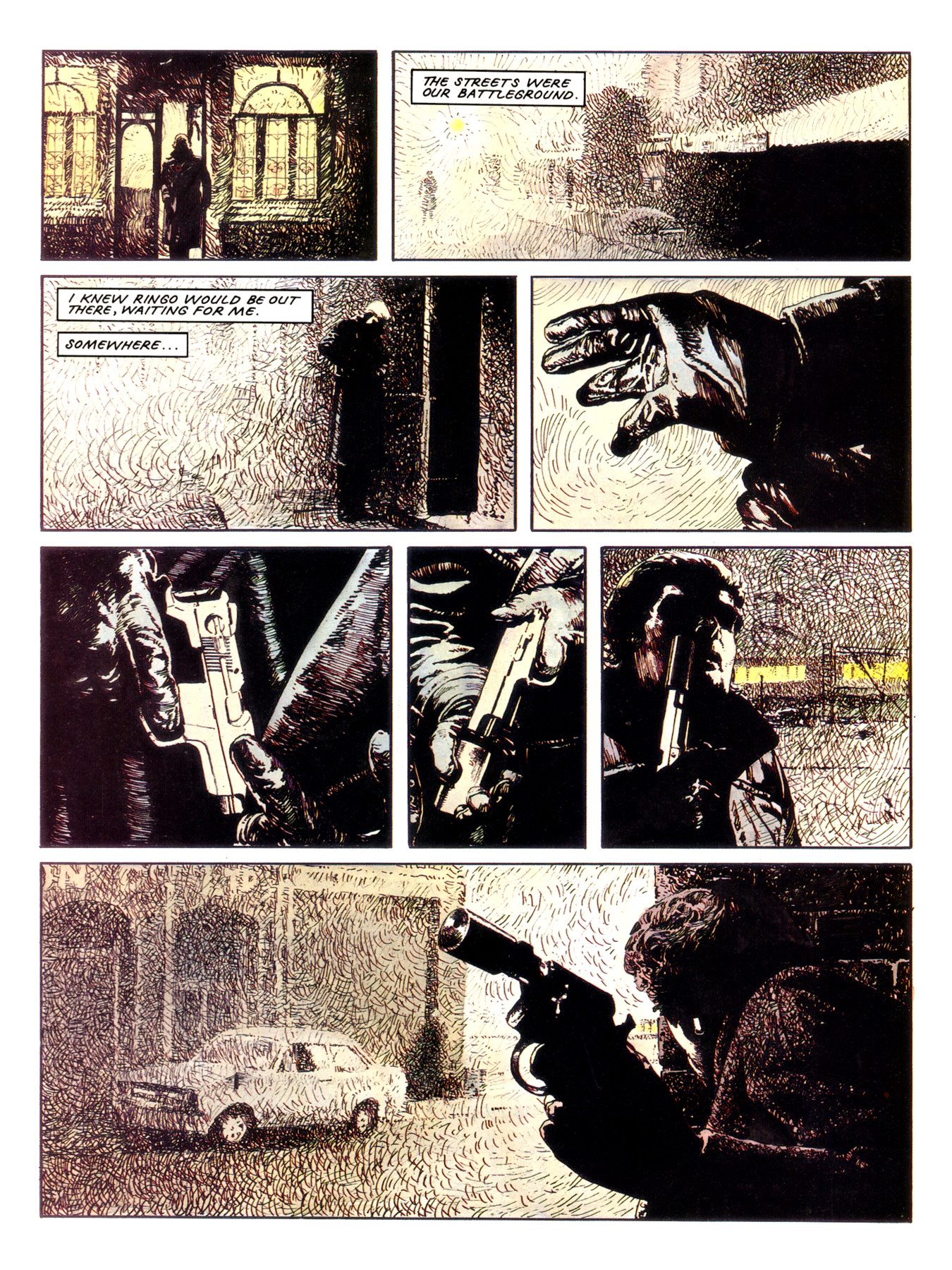 The Killing Game
The Killing Game
Whether you know John Wagner from his Batman comics (most notably his legendary run in Detective Comics alongside Alan Grant) or from his tons of other work, Button Man will not disappoint. This is as tautly written a tale as they come. As for the art, Arthur Ranson’s hyper-realism and sense of pace perfectly convey the moments of tension and the ferocity of each killing blow.
Criminal
 This critically acclaimed comic began as a bunch of well-told, firmly grounded crime stories that drew on some of the conventions of the genre but treated them realistically (as opposed to, say, the ultra-stylized approach of 100 Bullets). Criminal gradually became more and more ambitious, as characters and settings from across the series were shown to be interlinked in a wide narrative tapestry. There are also metafictional touches – most famously, the characters in the story arc ‘The Last of the Innocent’ are essentially grown up versions of the teenagers from Archie Comics, for some reason.
This critically acclaimed comic began as a bunch of well-told, firmly grounded crime stories that drew on some of the conventions of the genre but treated them realistically (as opposed to, say, the ultra-stylized approach of 100 Bullets). Criminal gradually became more and more ambitious, as characters and settings from across the series were shown to be interlinked in a wide narrative tapestry. There are also metafictional touches – most famously, the characters in the story arc ‘The Last of the Innocent’ are essentially grown up versions of the teenagers from Archie Comics, for some reason.
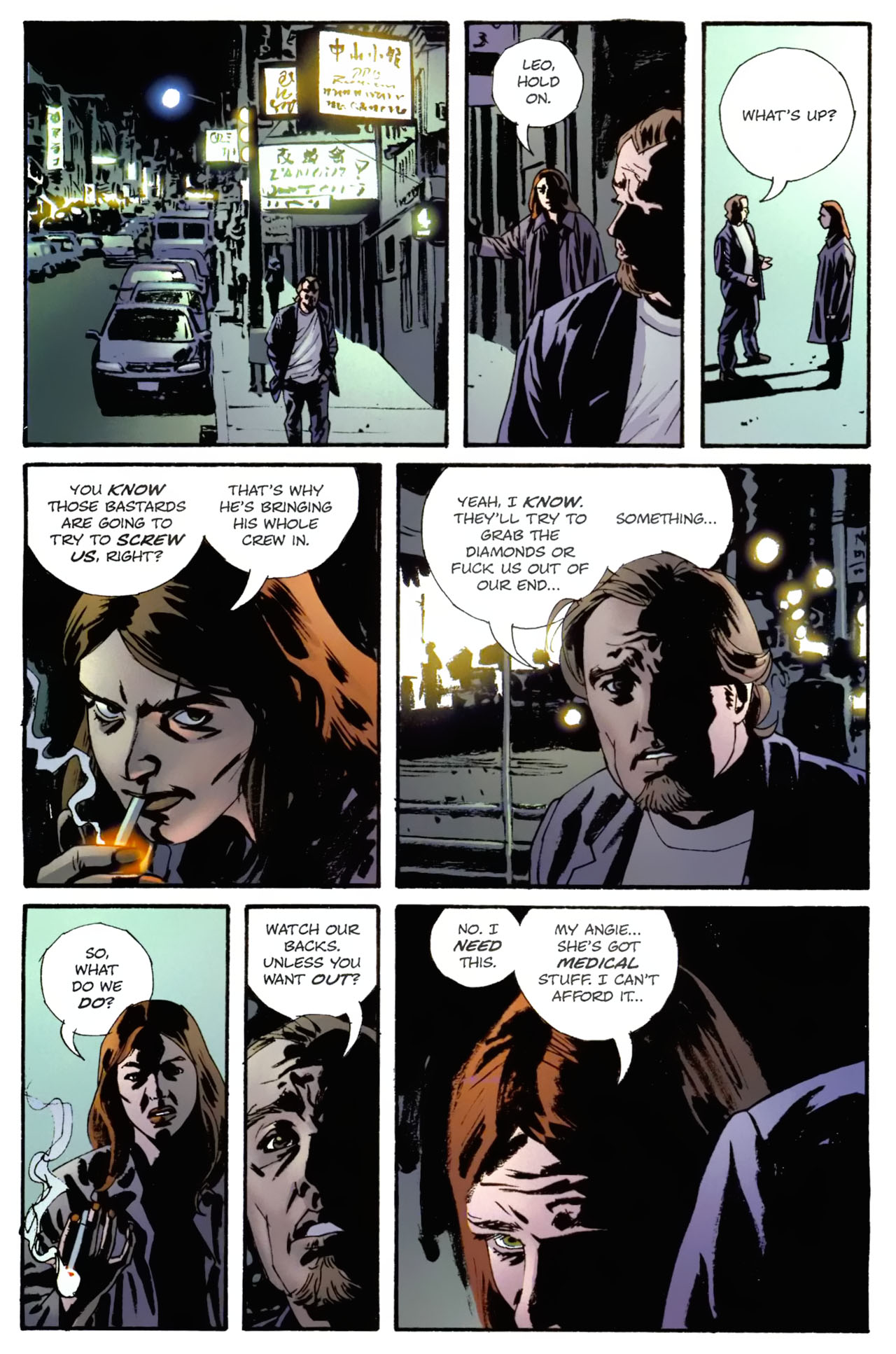 Criminal #2
Criminal #2
Ed Brubaker and Sean Phillips play really well off each other, having worked on a ton of projects together, including the Elseworld’s tale Gotham Noir. In the early 2000s, Brubaker was quite a prolific writer in the Batman universe, with his best work by far being comics that were directly inspired by crime fiction, namely Gotham Central, his run on Catwoman, and the underrated story arc ‘Dead Reckoning’ (Detective Comics #777-782).
Hit
In 1950s Los Angeles, a clandestine hit squad made up of cops goes around executing gangsters in the middle of the night. Throw in a million twists, turns, and double-crosses, as well as the obligatory femme fatale, and you’ve got the starting point for Hit. What could have been just another clichéd L.A. Confidential knock-off is elevated with great panache by Bryce Carlson and Vanesa R. Del Rey. So far these two have not done any Batman comics – and while I hope they manage to get more projects like this one rolling, on the strength of their work here I wouldn’t mind seeing what they could do in Gotham City, especially if helped by Archie van Buren’s gorgeous colors…

